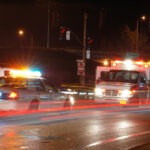A 21-year-old former student opened fire at BORG Dreierschützengasse high school in Graz, Austria on Tuesday morning, June 10, killing 10 people and wounding at least 12 others before taking his own life in what authorities described as the country’s deadliest postwar mass shooting.
The attack began around 10 a.m. local time, when the gunman opened fire in two classrooms at the school, located about one kilometer from Graz’s historic center. Police received emergency calls reporting shots fired in the building and deployed more than 300 officers to the scene. Security was restored within 17 minutes, and the school was evacuated with students filing out past armed officers.
Austrian Interior Minister Gerhard Karner confirmed that nine of the deceased victims were teenage students aged between 14 and 17, with one victim being a Polish citizen. Two victims had Bosnian ethnicity, though they were not citizens of Bosnia and Herzegovina, according to the Bosnian embassy in Austria. A female teacher was also killed, dying later from her injuries at Graz Regional Hospital.
The gunman was identified as a 21-year-old Austrian man from the Graz region who had previously attended the school but never completed his studies. He had no criminal record and acted alone in the attack. Police found his body in a school bathroom, having died by suicide.
Investigators recovered two weapons from the scene: a Glock handgun and a shotgun, both of which the suspect owned legally. When his body was discovered, he still had 24 bullets in two magazines and another 18 loose bullets for his handgun, along with 17 bullets for his shotgun. The gunman opened fire on pupils in two classrooms, one of which had once been his own classroom during his time as a student.
During a search of the suspect’s residence near Graz, investigators found a goodbye letter addressed to his parents, though it provided no clues about his motive. They also discovered a video, a non-functional pipe bomb, and plans for a future bombing. Police have indicated that the gunman had developed what they termed a “significant passion” for school shootings in recent years and had glorified both the acts and the perpetrators who carried them out.
Austrian Chancellor Christian Stocker announced three days of national mourning following the attack, with flags lowered to half-staff at official buildings across the country. Stocker stated, “Today is a dark day in the history of our country.” A national minute of silence was observed at 10 a.m. on Wednesday, June 11, in memory of the victims.
The Austrian Red Cross deployed 65 ambulances and 158 emergency staff members to treat the injured. Forty specially trained psychologists were made available to counsel students and parents. A meeting point was established at ASKÖ football stadium for parents of students at the school.
Graz, Austria’s second-largest city with approximately 300,000 residents, is located about 200 kilometers southwest of Vienna. The BORG Dreierschützengasse school serves about 400 students aged between 14 and 18. Following the shooting, local businesses near the school closed, and bouquets and candles were placed in front of the building.
The incident has prompted discussions about Austria’s gun laws, which are among the more liberal in the European Union. Some weapons, including rifles and shotguns that must be reloaded manually after each shot, can be purchased from age 18 without a permit in Austria. Other weapons, such as semi-automatic firearms, require a gun ownership card and firearms pass. Chancellor Stocker indicated that gun laws in the country would be tightened following the attack.
Austrian President Alexander Van der Bellen expressed condolences, noting that the victims were young people who had their whole lives ahead of them. European Union foreign policy chief Kaja Kallas and European Commission President Ursula von der Leyen also issued statements expressing shock and solidarity with Austria.
Police have reported dealing with approximately 30 copycat threats in Graz alone in the days following the shooting, requiring multiple police interventions. Two of the wounded victims have been released from the hospital, while two others remain in intensive care. The investigation into the gunman’s specific motive continues, with authorities examining multiple social media accounts attributed to the suspect.
This attack represents the deadliest mass shooting in Austria’s postwar history. Previous significant attacks in the country include a 2020 Vienna shooting that killed four people, carried out by an Islamic State sympathizer, and a 2015 incident in Graz where a man drove through a crowd with an SUV, killing three people and injuring more than 30.

